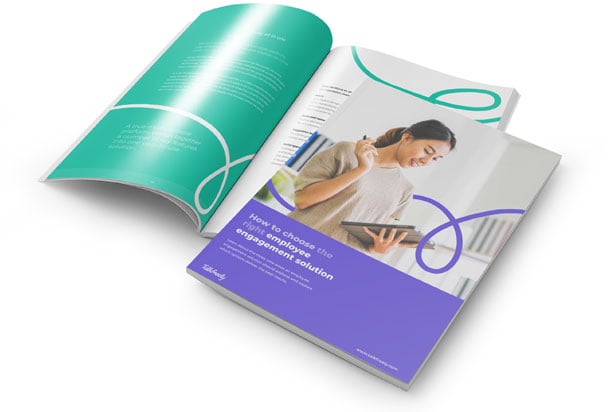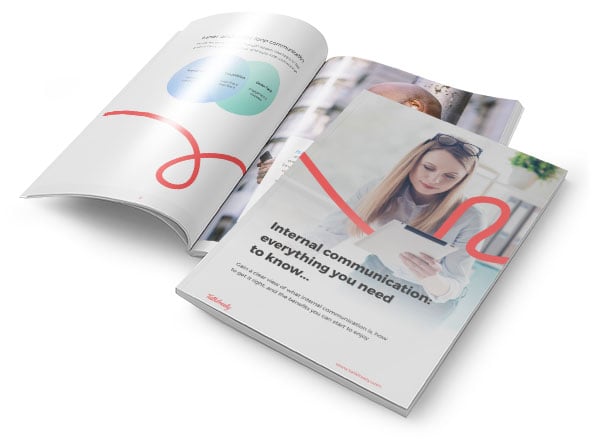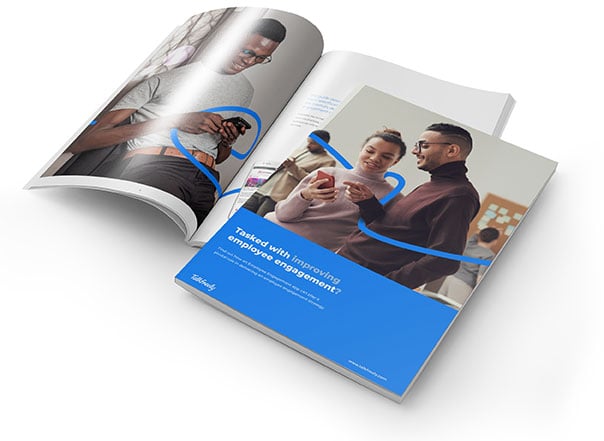A couple of weeks ago, we examined employee engagement surveys. Specifically, we looked at how even the most negative feedback can be turned into positive drivers of change when given due consideration.
However, surveys alone aren’t enough if you want to improve employee engagement throughout your organisation.
First and foremost, the sheer volume of questionnaires workers receive in the modern workplace has given rise to ‘survey fatigue’ — a phenomenon that severely limits the quality of the resulting feedback.
It takes time to implement company-wide change initiatives, and even longer to accurately gauge the effectiveness of the resulting innovations.
Increasing employee engagement, connecting disparate workforces, and dealing with the unique challenges presented by the ‘consumer employee’ (among other things) thus requires something more extensive. What’s needed is a carefully orchestrated employee listening strategy.
In this blog, we investigate the initiatives, technologies, approaches, and other key features that comprise a successful listening strategy, along with the benefits that can be derived when implemented correctly.
What is an Employee Listening Strategy?
An employee listening strategy is the catch-all term that describes the techniques employed by managers that enable them to develop a concrete understanding of the key factors that affect morale, job satisfaction, commitment, and the overall wellbeing of their workforce. The goal: to identify internal issues and, using reliable first-hand information gathered from front-line employees, take the necessary steps to address them before they develop into serious operational problems.
The biggest difference between a fully-fledged listening strategy and the traditional employee engagement survey, is the former’s ability to monitor change over a long period of time using multiple data sources.
Such surveys still have an important role to play in the successful execution of a comprehensive listening strategy, of course, providing the perfect opportunity to gather feedback en masse. Nevertheless, maximum value can only be extracted if they’re supported by a broad range of tools and processes, each targeted towards a specific area or need. These include:
- Instant messaging (powered by a modern internal communications app) — Gathers feedback in real time
- Polls — Help you understand employees’ thoughts and feelings on specific issues
- Social media — Allow you to analyse existing channels to measure engagement rates
- Team meetings — Conducted sporadically via a video messaging service to discuss key topics in greater depth
As you can see, the best methods tend to be those that are both less intrusive and labour-intensive than traditional methods of data capture.
Whatever your preferred method, feedback should be harvested from all levels of your business. That includes everyone from new starters and recent departures, to 20-year veterans and those that spend the majority of their time off-site. It’s impossible to paint a clear picture of front-line conditions if you’re only focusing on a small subsection of your workforce.
This brings us onto the most crucial aspect of an employee listening strategy: acting on feedback. The longer the gap between receiving feedback and instigating change, the greater the likelihood employees will think you’re ignoring their concerns and don’t value their opinions.
An outright failure to act is even worse. It implies your strategy is nothing more than an elaborate form of lip service — a sure-fire way to erode trust in management. This, in turn, can have a serious knock-on effect on both morale and retention rates.
Utilise Every Weapon at Your Disposal
Towards the end of 2018, Gartner predicted the sources from which employers draw their employee engagement data would continue to diversify. According to the article, as many as 59% of organisations would use engagement data acquired from sources other than traditional employee surveys.
The sources mentioned here are typically varied; their effectiveness depending on the size and complexity of the enterprise in question. But, for modern businesses that aren’t afraid to embrace the technological advancements brought about by the fourth industrial revolution, instant messaging services will form the cornerstone of future employee listening strategies.
Unlike emails, memos, and other conventional methods of communication, instant messaging apps facilitate fast and accessible two-way communication between employees and management. Outstanding issues can thus be raised and discussed immediately. And, because they can be installed directly on the employee’s smartphone, important information is available 24/7.
Some applications even have the facility to answer basic questions autonomously via chatbots: where workplace health and safety documentation can be located on the server, for instance. According to Workforce Focus, the chatbots will only increase in prominence and sophistication in the coming years, making such instant messaging services that much more valuable to large workforces.
Polls are just as crucial when it comes to performing ad hoc ‘temperate checks’. Generally smaller and more concentrated than a full company survey, they’re quicker and easier to deploy, offering instant feedback. This enables employers to nip emerging issues in the bud and gauge opinions in real-time.
Along with these two more direct forms of gathering feedback, it’s also worth leveraging other organic channels as part of your listening strategy. Glassdoor, for example, has the potential to highlight serious issues within your company that would otherwise go unnoticed. The same can be said of social media which, as well as being a proven way of boosting employee engagement, allows you to monitor the feelings of your customers, providing a useful jumping off point for future discussions.
Together, the approaches mentioned above enable you to keep abreast of developments within your organisation continuously, which enables you to cultivate a positive and collaborative working environment.
Invest in a Dedicated Employee Engagement App to Support Your Efforts
A carefully-considered employee listening strategy is paramount to keep workers engaged and aligned with company goals. Not only does this make life better for your workforce, according to US consultancy firm Gallup, engaged employees are 17% more productive and considerably less likely to be absent. Retention rates also tend to be higher.
An employee engagement strategy also improves morale, happiness, collaboration, commitment, and job satisfaction.
Implementing one is easier said than done, however. For that reason, modern business owners (especially those with a widely-dispersed workforce) should consider investing in a dedicated employee engagement app.
Beyond the benefits mentioned above, this technology helps:
- Promote company news
- Build awareness and understanding amongst employees
- Facilitate company-wide recognition
- Encourage participation in company events
Book a demo of our market-leading software to discover first-hand how an employee engagement app can help you formulate an effective listening strategy.
Topics:
Employee Engagement








